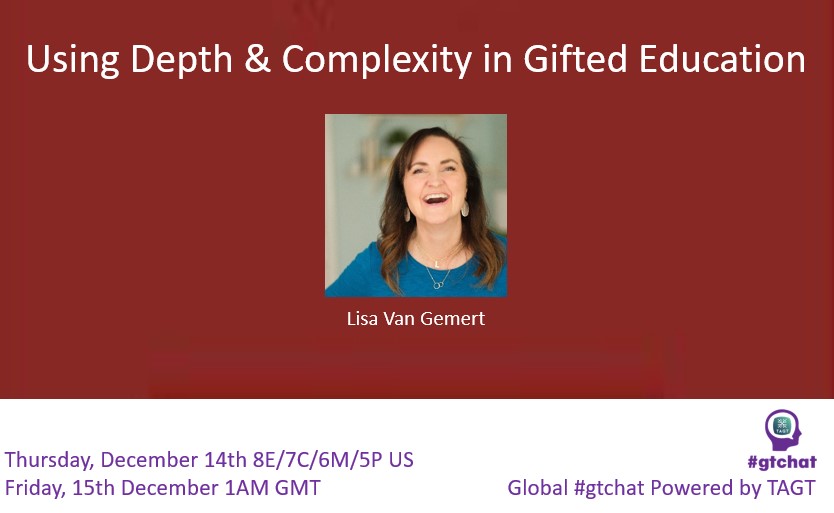
Depth and complexity are both important for GT students. They can be a powerful tool for differentiating instruction or diving deeper into content. Depth is gifted education helps GT students to expand knowledge and complexity is a way to challenge them. It is important to explain the meaning of depth and complexity to GT students early on in their education.
All students deserve to be challenged every day in the classroom. When the curriculum and instruction are not deep and complex enough, this does not happen. When depth and complexity are matched to students’ abilities, both rigor and engagement increase which is important for GT students. GT students thrive when confronted with deep and complex content. It can be a catalyst for exploring personal interests and passions.
From an early age, GT students are often presented mixed messages about their abilities and what being identified as ‘gifted’ means to them personally. When underchallenged in elementary school, they are unprepared in later years when the work is no longer easy. GT students need the support of parents, teachers, and mentors to learn to persevere in their studies and to know how to deal with setbacks.
Depth and complexity can be introduced as early as kindergarten across the curriculum. Content and instruction can incrementally differentiated. Throughout the school year, teachers can start with simple ideas and questions, and then increase the use of complex and deep questioning. GT students can benefit from looking at problems from different perspectives, looking for patterns, and discerning trends.
What can parents do at home to encourage deep and complex thinking? Parents are always their child’s first teacher and modeling how to think about complex issues is an important first step. They can engage their children in deep conversations to raise awareness of how they consider and react to everyday experiences in life. There are many difficult and complex issues in the world today. Parent should encourage older children to identify and discuss these issues.
Please note, this chat focused on using depth & complexity in gifted education. For information on J. Taylor Education’s Framework, go to Depth & Complexity Framework which includes Prompts & Icons (Kaplan/Gould).
A transcript of this chat may be found at Wakelet.
Global #gtchat will be on hiatus until further notice. Our Twitter (X) Account and Facebook Page will provide information on the chat, and news regarding the future of this chat.
About the author: Lisa Conrad is the Moderator and owner of Global #gtchat. She is a longtime advocate for gifted children and also blogs at Gifted Parenting Support.
Resources:
Gifted Guild’s Guide to Depth and Complexity: Finding Your Way Through the Framework
Depth and Complexity Digital Frames Tutorial (YouTube 4:17)
Master the Depth and Complexity Framework
What is Depth and Complexity? (YouTube 8:10)
Teaching Vocabulary with Depth and Complexity Frames
Depth and Complexity Quick Guide Ebook (TPT)
Depth and Complexity Frames Editable Frames FREEBIE with Teacher Tips (TPT)
Language Learning 101: In-Depth Learning versus Surface Learning
Introducing Ourselves With Depth and Complexity and Frames
Understanding Depth and Complexity
Depth and Complexity Questions with Research Projects
Tips for Parents: Encouraging Your Children to Think with Depth & Complexity | Davidson Gifted
Increasing Depth and Complexity for Gifted Students (YouTube 10:13)
Depth and Complexity Overview (pdf) | TEA
Engaging Gifted Students with Depth and Complexity
Depth & Complexity Framework – Understanding the Pieces (pdf) | Taylor & Francis
How To Introduce the Depth and Complexity Icons to Students
Depth and Complexity Icons: Everything You Need to Know!
Interdisciplinary Lesson Plans (Google Docs)
5 Creative Ways to Use Hexagonal Thinking
Free Depth and Complexity Icons | J Taylor Education
Photo courtesy of Lisa Van Gemert.
Graphic courtesy of Lisa Conrad.
